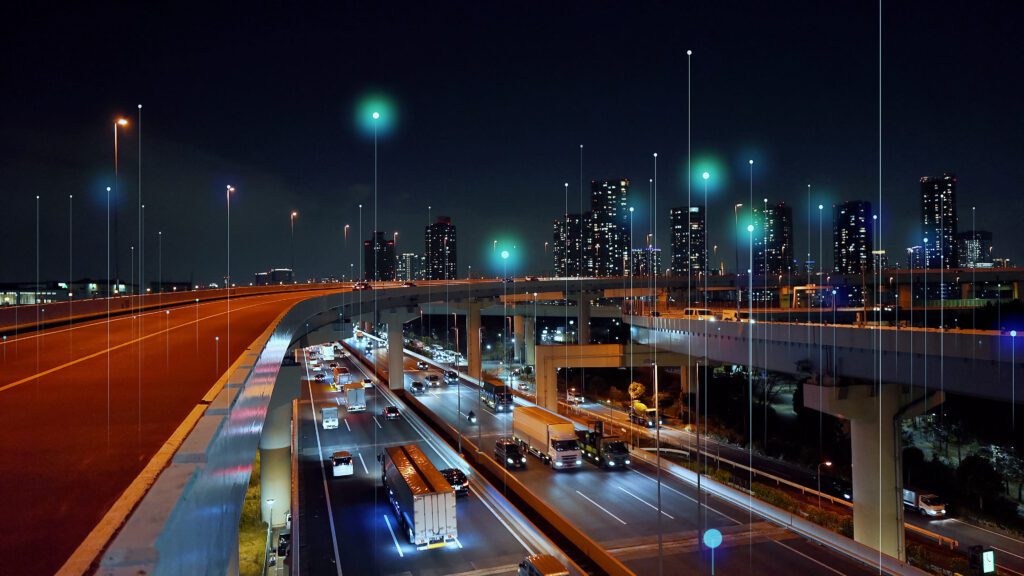If the last two years taught supply chain companies anything, it’s that resiliency and preparation for times of crisis is the only way to build long-term sustainability in the marketplace.
The industry is facing make-or-break challenges across various sectors. Ports are packed with containers waiting to reach their final destination. Shippers are struggling to find drivers to move products, and double brokering has become commonplace.
The result of the crisis has been historic inflation. Consumer demand is high and supply is low. The supply chain is at a critical juncture, and companies need to modernize quickly to overcome these challenges.
Some of the big questions: What does the supply chain of the future look like? Are methods of the past fit for the future? Can visibility solve my problems? How can I digitize quickly so I don’t get left behind?
Here’s how you can turn a crisis into opportunity in 2022 and beyond.
From just-in-time to just-in-case
Given the current supply chain capacity crunch, everyone is rethinking and restructuring lean, just-in-time processes. The goal now is just in case, a hedge against the kind of disruptions that have become all too common.
According to Gartner, 75% of supply chain leaders report an increase in high-impact disruptions compared to five years ago. While risk management allows leaders to work proactively, resilient systems are still required for an effective response to a threat.
Companies all over the world have been burdened by the recent complications in the supply chain, whether it’s the shipping bottlenecks at ports, or a lack of semiconductors on assembly lines.
“Just-in-time” strategies prioritized costs: minimum inventory, reduced storage, and less expensive production.
A 2010 McKinsey presentation titled “Lean and mean” lauded this way of thinking. “Companies that run successful lean programs not only save money in warehouse operations but enjoy more flexibility,” it said.
11 years later, the script has flipped.
“A lot of the operating models in the supply chains we see as broken today, were cemented 20 years ago on what at the time were universal truths, that going after low-cost suppliers… made a ton of sense,” Brian Higgins, head of KPMG’s U.S. supply chain and operations practice, told Financial Times.
Companies are now shifting their focus from just-in-time to just-in-case, which allows them to keep up with ever-changing consumer demand. They reduce the risk of lost sales due to a lack of inventory by keeping more inventory in stock.
The shift has also forced companies to think locally when it comes to production and warehousing, since shipping times have been unpredictable during the current crunch in the industry.
But just in case isn’t a perfect solution. It costs more to carry more inventory, and when capital is tied up with inventory, it lowers a company’s ability to use it elsewhere.
The model forward appears to be finding the sweet spot of a hybrid blend between just in time and just in case.
Using visibility as an enabler
The need for visibility has never been more critical in the supply chain.
While it’s not the answer to all problems, it offers a window into the location and status of cargo for shippers struggling with communications and compliance blind spots in the supply chain. Visibility allows you to verify the integrity and safety of shipments, as well as ensure product is moved more efficiently and at a lower cost.
It becomes a real-time compliance check on every single shipment to make sure products are moved in the proper way. Visibility not only allows you to manage risk but support quality processes as well.
3PLs can win in the current market not just by ensuring carriers are reliable but by improving transparency and proving the integrity and security of the products they’ve been trusted to move. You need to be able to guarantee you’re meeting your customers’ standard of care 100% of the time.
According to Gartner, the freight visibility market is expected to grow to $1 billion by 2024, up from $300 million in 2020. That’s a rapid acceleration in the adoption of technology, and companies literally cannot afford to be left behind. 3PLs with superior technology have the upper hand and will quickly rise to the top.
Digitize your business
The supply chain has long suffered from antiquated strategies and siloed workflows across marketing, product development, manufacturing, and distribution.
We need to break down these walls, and digitization is the most efficient and effective way to do that.
Digital Supply Chain Twin was an overall supply chain tech trend in 2021. Supply Chain Digital defines the chain twin as a “virtual supply chain replica that consists of hundreds of assets, warehouses, logistics and inventory positions, and it is gaining more attention in the industry due to improvements in technical and computational capabilities with operations technology.”
Using end-to-end big data insights allows for aligned decision-making. Investments in data literacy and visualization in a way that is user friendly allows the wider company to leverage technologies to solve a multitude of problems. Visualization tools (dashboards, machine learning models) communicate valuable insights that support organizational strategies and problem-solving efforts.
These are the supply chain tools of the future.
Digital transformation in the supply chain has been a growing trend over the past decade. Gartner estimates that through 2024, 50% of supply chain organizations will invest in applications that support artificial intelligence and advanced analytics capabilities. Like in many other industries, COVID-19 added new velocity to digital change.
Now companies are in various stages of technology maturity, working to digitize complex systems.
While many are eager to harness the power of data, supply chain leaders and their organizations are often not yet ready to reap the benefits of digitization, digital transformation, and data-driven decisions.
According to Gartner, 8 out of 10 supply chain executives say they made investments in technology, but they aren’t sure why they’re not getting better decisions.
Companies need to simplify and then democratize.
Effective integration leads to democratization. Say you are shipping COVID-19 test kits or vaccines. You can gain visibility into their integrity through digital tools, such as a time and temperature sensor tracking system. You can improve efficiency and better use resources by feeding that data to a mobile app that anyone can use, regardless of their logistics experience. Any employee can scan the external code on a box and confirm your product is at the right temperature.
Shifting to sustainability
There is no telling what supply chain disruption will come next. The disruption of the last two years can almost solely be attributed to the COVID-19 pandemic, as the big issues we saw in 2021 mostly stemmed from the virus.
But there are other factors at play, some tangentially related to the pandemic. The workplace has changed forever. The preferences of shoppers have, too.
Supply chain sustainability, which refers to efforts to consider the environmental and human impact of the product journey through the supply chain, is the way of the future.
Enterprises should be shifting their focus to sustainable profit. It’s durable, resilient, and holistic. Sustainability-driven models such as the circular economy and reverse logistics are redesigning how organizations approach manufacturing, distribution, and consumption.
The global reverse logistics market – which moves product from consumers back to manufacturers for recycling or returns – was valued at 635.6 billion in 2020 and is expected to grow to 821.5 billion in 2025.
And supply chain managers expect their focus on the circular economy – the sharing, leasing, reusing, repairing, refurbishing and recycling of existing materials and products – to increase in the next two years.
That trend also aligns with consumer preferences. A recent Gartner survey showed that 27% of supply chain professionals rank sustainable delivery in the top 3 customer demands.
What’s next?
It’s difficult to predict when this current supply chain crisis will end. Experts expect the capacity crunch and driver shortages to last into the second half of 2022, meaning there’s still a long way to go before companies’ and consumers’ start to see a real light at the end of the tunnel.
Shippers and 3PLs cannot afford to get left behind during this time of crisis.
If you haven’t already made plans to invest in visibility technology and modernize your business, you’re running out of time.
Learn more about how Overhaul is using intelligence-driven risk management and real-time visibility solutions to improve the businesses of global shippers.





